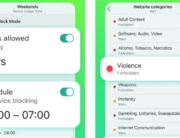The July part 7520 price for usage with property preparing techniques such as CRTs, CLTs, QPRTs and GRATs is 0.6%, which can be just like the June rate. The July relevant rate that is federal”AFR”) for usage with a sale to a faulty grantor trust, self-cancelling installment note (“SCIN”) or intrafamily loan with an email having a length of three to nine years (the mid-term price, compounded annually) is 0.45%, up somewhat from 0.43per cent in June.
The low area 7520 price and AFRs continue steadily to present possibly gratifying possibilities to fund GRATs in July with depressed assets which are anticipated to perform better within the coming years.
The AFRs (according to yearly compounding) found in experience of intrafamily loans are 0.18% for loans with a phrase of 3 years or less, 0.45% for loans with a phrase between three and nine years and 1.17% for loans with a phrase of longer than nine years. Aided by the brief and mid-term prices staying extremely low (even though the latter is slightly up since June), consumers that have the liquidity to settle loans within 36 months will most likely like the short-term price because of their property preparation deals, and customers searching for a wider time horizon will probably would like to utilize the rate that is mid-term.
Gold and silver coins Now Deemed Tangible Private Property in Florida
Effective July 1, 2020, there clearly was a brand new law in Florida (part 731.1065 associated with the Florida Probate Code) that treats “precious metals in almost any concrete type, such as for example bullion or coins, kept and acquired because of their historical, creative, collectable, or investment value aside from their normal usage as appropriate tender for payment, as tangible individual home. ” Accordingly, unless such products are particularly addressed in a customer’s Will or Revocable Trust, no matter what the worth of such products, the gold and silver coins would pass into the beneficiary of this client’s concrete individual home (which generally speaking is disposed of outright) instead of to the beneficiary or beneficiaries associated with the customer’s residuary property (that is generally speaking in a trust that will (1) be protected from creditors, (2) be treated as split home in the event that beneficiary divorces, and (3) remain in the bloodline for numerous generations, and become excluded from transfer income tax at each generation into the degree GST exemption happens to be allocated).
People who have gold and silver coins ought to review their estate preparing documents to make sure that either (1) such products are expressly addressed and directed become distributed in a certain way or (2) they truly are confident with such things being written by standard towards the beneficiary or beneficiaries associated with concrete property that is personal. People ought to be reminded that such products will likely not pass as an element of their residuary property.
The Tax Court reiterates and is applicable the facets for determining whether intrafamily loans are, in reality, loans in Estate of Bolles v. Commissioner, T.C. Memo 2020-71 (2020)
Estate of Bolles v. Commissioner has to do with the treating loans produced by the decedent, Mary Bolles, to her son Peter, whom neglected to repay the loans after the failure of their company, inspite of the passage through of several years.
Mary Bolles had five young ones whom she had constantly meant to treat similarly for property preparation purposes, making equal “advances” every single youngster which were recorded as loans and forgiven towards the level for the yearly exclusion quantity every year. But, Mary’s son Peter had been addressed differently money tree installment loans in many respects, most most likely so that they can help Peter’s a deep a deep failing architecture company that he had bought out from their dad.
Peter, as president of their architecture company, had entered into an understanding aided by the Bolles Trust, a grouped family members trust of which Mary along with her kids were beneficiaries. Pursuant to this contract, Bolles Trust property ended up being utilized as protection for $600,000 in loans to Peter’s architecture company, plus the company owed the Bolles Trust $159,828 in back lease. Peter defaulted on both re payments and also the Bolles Trust happened responsible for $600,000 in loans from banks.






